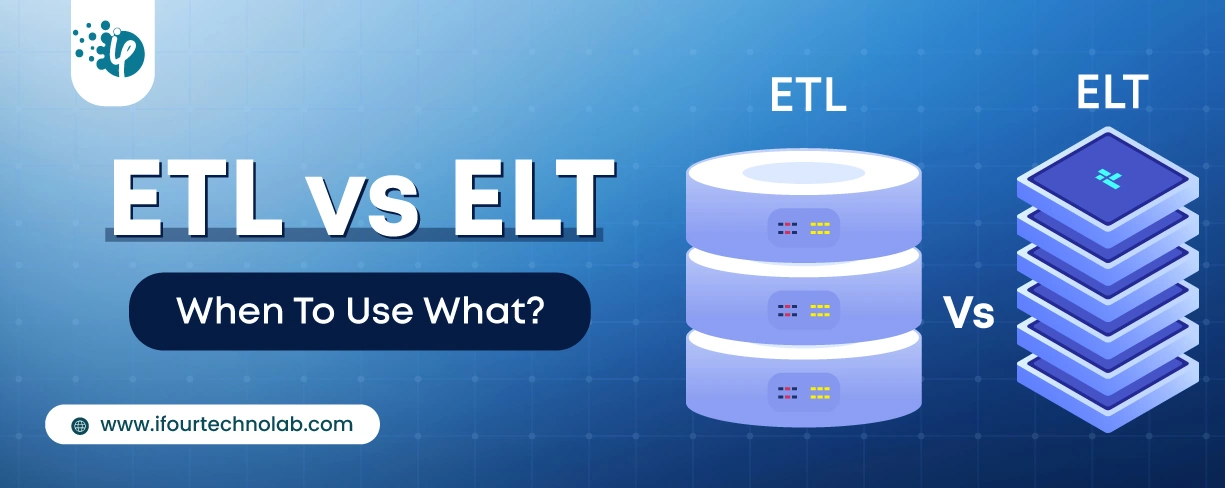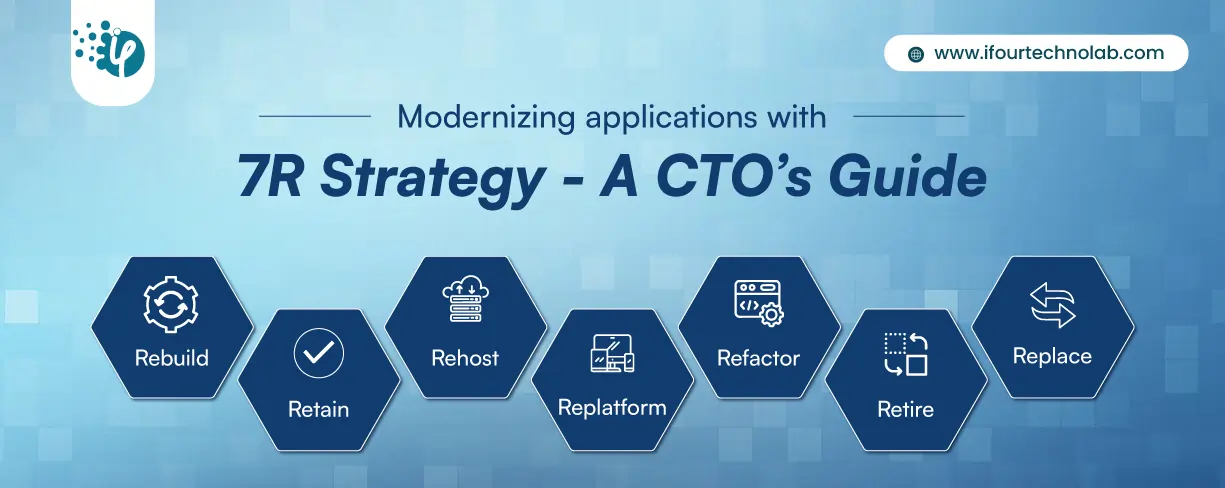How to Do Forecasting in Power BI (Steps & Accuracy Metrics)
Remember our last guide - Power BI forecasting? It revealed things that truly blocks accuracy, both structural and situational. Now it's time to take the next step. Knowing Power...
Listening is fun too.
Straighten your back and cherish with coffee - PLAY !

Every successful business would start its journey with a brilliant idea. And this brilliant idea of business would be lead through the help of website development and transformed into success. In order to get your business off the ground, it is obvious to choose the right technology. The right backend development technology would lead your business with consistent success in the market. This would handle your website performance, loading time, updates, and changes. Despite having a number of technologies and frameworks, one of the difficult things people encounter is to select the best framework, language, runtime environment, etc. from the list. Because each one of these has its own benefits. In such cases, considering certain factors that are recommended by major eminent nodejs backend software companies would make a great sense.
“As a DevOps engineer I would suggest looking at session management, database access and scalability, speed of operation and a general response to modernization.
It all depends on what you are looking for as a founder or lead developer. Is the technology required to kick-start a new project, or support existing programs? The performance of your product or software depends entirely on the kind of tech stack you opt for, and timely issues and bugs will need to be replaced by developers in real time.
Programming languages also differ in their functionalities and must be chosen based on its applications and usage. For software deployment, I’d say consider which teams are going to be responsible for using the bank-end technology, and how best to make it useful for non-technical teams as well. For instance, Ruby makes it easy to build web apps and is popular among startups for its high functionality.”
- Eric Carrell, DevOps Engineer from RapidAPI
Security (tends to be forgotten or taken for granted)
- Tom from KDI.ca
“We all know how important backend technology is and, making the right choice can often be make or break for a business - particularly one that’s just starting out. Before going ahead and taking the plunge, there are a number of things to take into consideration:
The stage your business is at - If you’re just starting out, your goal will be to launch the MVP super fast so you’ll want a framework or CMS tool that lets you build a working prototype in a short amount of time. If you’re established and growing, you’ll need something with a bit more oomph.
You’ll need to think about the kind of work or projects that you’ll be undertaking in order to understand what kind of technology you’re going to need.
Like many things in life, the kind of technology you opt for will often be dependent on your budget. Research your ‘optimum’ backend technology and then shop around for a price that fits.
If you’re expecting (or hoping) that your business will evolve and grow, then you’ll need to be making sure that your backend technology is fully scalable to avoid having to spend a ton more money on new tech.
It’s super important that you are 100% aware of all of the security benefits and weakness of the backend technology before you commit to a purchase.”
- Milosz Krasinski, Managing Director at Chilli Fruit Web Consulting
There’s a reason companies like Google, Intel, Amazon, LinkedIn, Spotify and other hugely successful brands use OKR frameworks for goal management: They get results.
OKRs, or Objectives and Key Results, are a metric that outlines company and team "objectives" along with the "key results" that define the achievement of each objective. They typically represent aggressive goals and the measurable steps you’ll take towards achieving those goals.
Amid upheaval like COVID-19 has created, for instance, the model has allowed progressive brands to remain nimble and pivot quickly – ensuring entire multi-national businesses can shift in perfect sync and enabling disparate teams to continue rowing in the same direction across all levels of the business even when change comes quickly. From ensuring strategic alignment to providing top-down clarity and transparency, OKRs are helping today’s businesses adapt and thrive; but gone are the days they were housed in hard-to-maintain spreadsheets and Word docs.
While still a somewhat nascent industry, OKR software can be a game changer for today’s enterprises. Industry frontrunnerProfit.co has developed a cloud-based SaaS platform that integrates OKRs and task management, plus 300 other data-driven metrics, to help companies successfully implement the model and reach new heights. The next-generation solution has been applied by leading businesses like Vonage, Omega, Wex and Telmar – and is creating meaningful change for brands across the globe.
To learn more, I’d be happy to connect you with key executives from Profit.co, or share contributed content on any of the topics below:
OKRs 101: What they Are; Why You Need Them; How They Can Take Your Success to the Next Level
The Problem with Business Acronym Overload; and the Only Three Letters You Really Need to Succeed
OKRs Help Companies Navigate the “New Normal”
10 Reasons Why OKRs Can Make Your Business an Execution Superpower
OKRs, The Secret Behind “High-Performing Teams”
- Jennifer Magaña from Beyond Fifteen
When planning for a web project, it's useful to have a beta mindset so that you're able to change and according to the feedback of the end user.
This also applies to choosing the technologies that would be used within the project, as there's no shortage of ways to build
In short, I would look at 3 characteristics of backend technologies:
How much is the coding language/tech being utilized by developer teams today, and what is the general outlook for its future? The latter is difficult to answer, but we can make educated guesses based on historical data from other projects and sources. It's also important to have a multitude of resources (code guides, forums, etc) for devs to use as they build with this technology so that the project doesn't slow to a halt.
People think of backend tech as extremely complex - and while it certainly can be, it should have a strong set of rules that provide boundaries and intuitive learning for those using it. Without this simplicity, the project efficiency just isn't there.
Most of the features and functionality of the web project (site, tool, online mobile app) come to life on the frontend, but should still be some elasticity on the backend for developers. This allows the technology to be used to fit the purposes of the project.
- Matt, Owner from Apps PC Wiki
“There’re 3 main factors to consider while choosing a backend technology:
While small projects usually need to be delivered in the shortest time possible, so it’s reasonable to use simple technologies for them, like CMS or WordPress.
As for the middle and large-size projects, they would need more complex tech stacks with a combination of several technologies. There are several tech stacks that can be used for complex projects:
Some tools are open-sourced and free to use, while others are licensed and paid. Moreover, developers’ rates vary depending on the technologies they’re proficient with.
Examples of MEAN stack websites: YAHOO!, YouTube, Netflix, Reddit, etc.
Examples of the MERN stack websites: eBay, GitHub, PayPal, Bloomberg, etc.
Examples of the ROR stack websites: Airbnb, Shopify, Dribbble, Twitter, etc.”
- Igor Diachenko, the CTO at Cadabra Studio
“HERE ARE THREE FACTORS TO CONSIDER BEFORE CHOOSING BACKEND TECHNOLOGY:
PROJECT REQUIREMENT:It is important to know and understand the project requirements before deciding which backend technology to use.
If your project requires real time functionality, then you can use Node, as it is good in concurrency. If the project requires a functional website to increase conversions, then Drupal can be used.
AVAILABILITY OF RESOURCES:Before choosing a backend technology, you need to identify what resources you have available.
For example, the availability of developers. If you are choosing a language which is not in common use such as Lisp, it will be hard to find programmers who know how to use it. If they do, they’ll charge a lot. So choose a technology that your developers are willing and able to work within.
Commonly used backend technologies will thrive in the future and also it will be easy for your developers to implement.
DEVELOPMENT AND MAINTENANCE COST:Whatever backend technology you will choose will directly influence the development cost
There will be the cost to hire developers, so for example, someone who works in Ruby or Python language, will charge more than a developer who works in PHP or Java language.
There is then the maintenance cost for the product, after it has been deployed. Consider sticking to open source technologies because they are cheaper and changed without any restrictions.” - Azza Shahid, Outreach Consultant @ GigWorker
“It is impossible to choose the most suitable backend technology without familiarizing with the requirement specification and having an idea about the project. However, you should pay attention to some general factors
The Development Team and Budge
As for costs, it is important to have a general idea of your project budget and employee costs.
Possibility of Integrating with Other Solutions
It is usually the case that a project relies on interactions with the application programming interface (API) of third-party services. The presence of a software development kit (SDK) for such services dramatically speeds up and simplifies development.
System Load Requirements
Several projects have different processing loads, and therefore not all tech stacks can cater to all processing load requirements. Thus, you need to compare your prospective product processing loads with the tech stack's capacity to be sure it can meet that need.
Flexibility and Scalability of the Technology Stack
Technology is constantly changing, upgrading, and adapting every day. So you should first be aware of the latest web development trends for the next few years to be sure of the flexibility and scalability of the tech stack you choose.”
- Aleksandr Denisyuk, PHP Developer at Orangesoft
“You are just halfway across if you have a brilliant web application idea. Your path will only be cleared when you will also decide the backend technology to back that application with. This backend technology will not only decide your website work but also numerous other updates and changes. So, some of the major factors which you have to keep in mind before choosing backend tech are given below. The first and most basic factor would be the size of your project. Normal and small applications have different needs in comparison with bigger and complex apps. Secondly, the kind of product in making is an important factor. The type of product will be the deciding factor for choosing the stack. It can anything from data-intensive apps to streaming applications. Lastly, the budget is everything. Various tools are both open-sourced and free for commercial use. While there are many licensed and paid tools. So, it all depends on your cost bearing ability.”
- Katherine Radeka from Etia.Com
“Choose that technology must be faster than with other frameworks and languages. Help developers to take applications from concept to completion as quickly as possible. Must take security seriously and help developers to avoid security mistakes. The main goal should be to simplify the creation of complex, database-driven websites. Optimizing for programmer happiness with Convention over Configuration. Should be faster so, programmers do not have to spend a lot of time configuring files in order to set up. Choosing the right back-end technology requires a sound knowledge of frameworks, languages, servers, etc. The choice of technology will depend on the technical capability of the team.”
- Shiv Gupta, CEO of Incrementors Web Solutions

Remember our last guide - Power BI forecasting? It revealed things that truly blocks accuracy, both structural and situational. Now it's time to take the next step. Knowing Power...

It's amazing to see how Data teams today are racing ahead - moving from traditional warehouses to cloud-native platforms, lakehouses, and real-time architectures. But in this rush,...

Think about the last time CTOs spent most of their time fixing old systems. Updates were slow, servers were expensive, and adding new features took time. Now, things have changed....